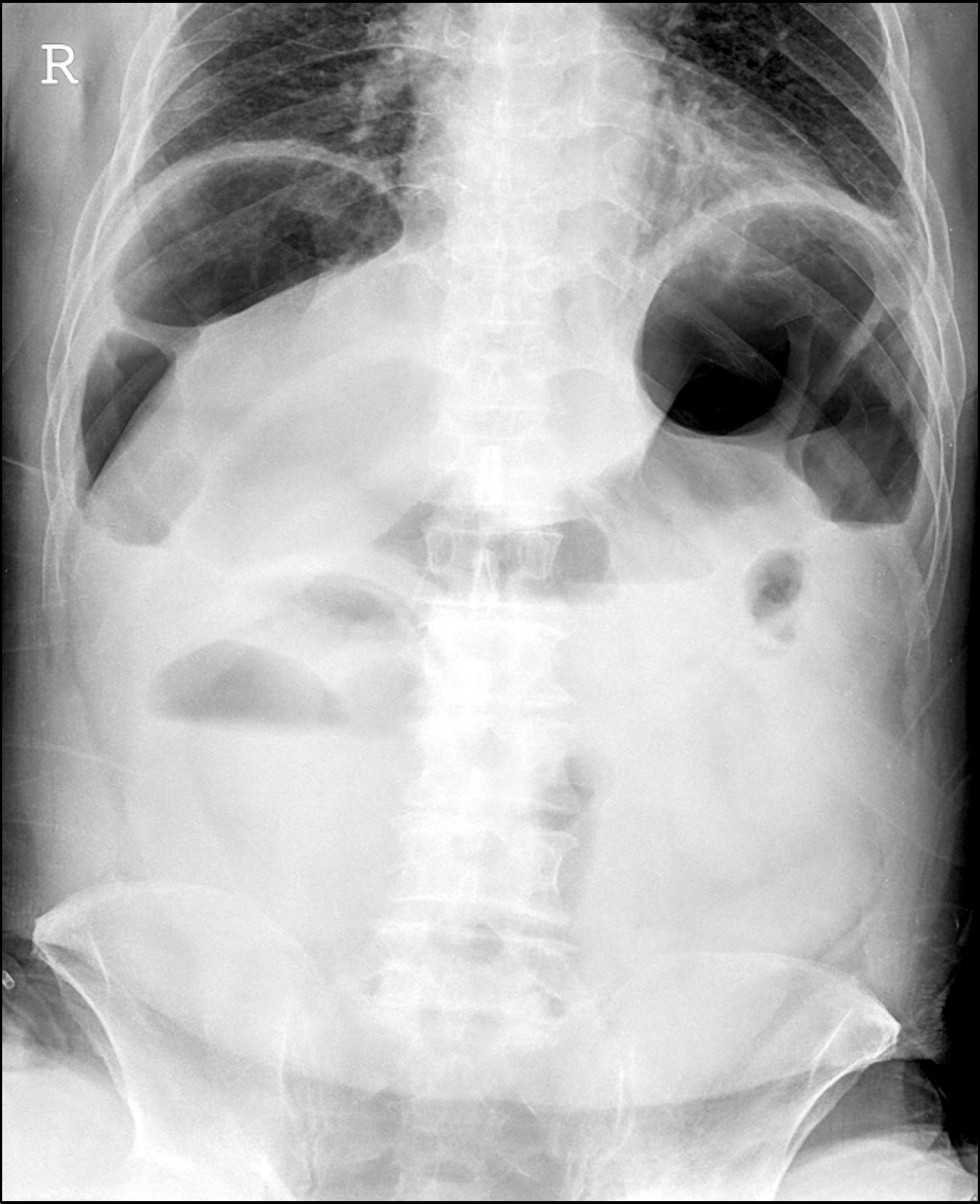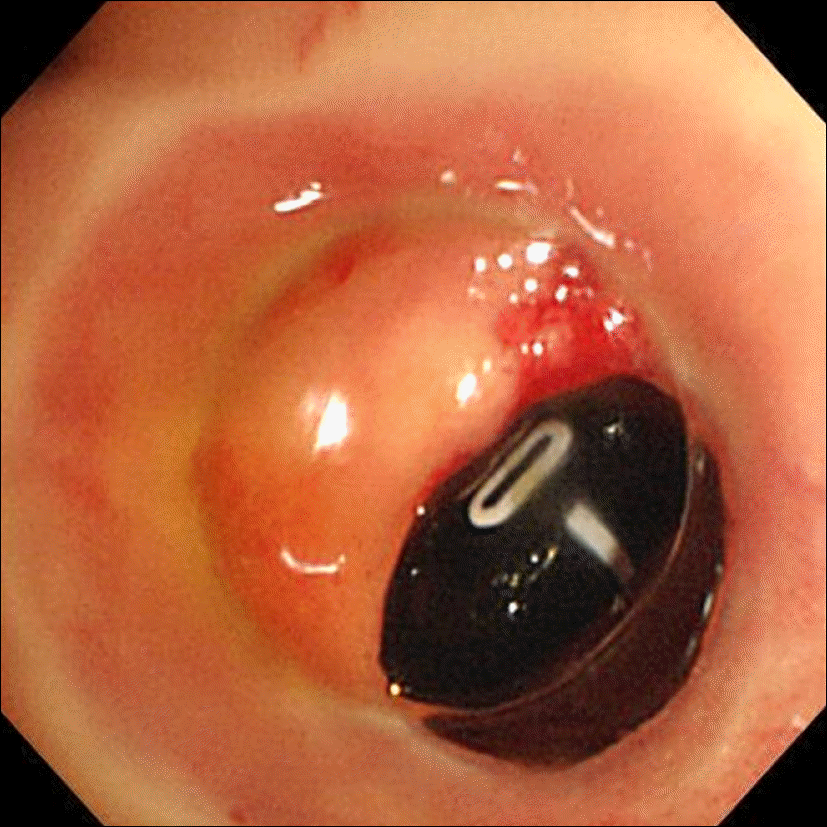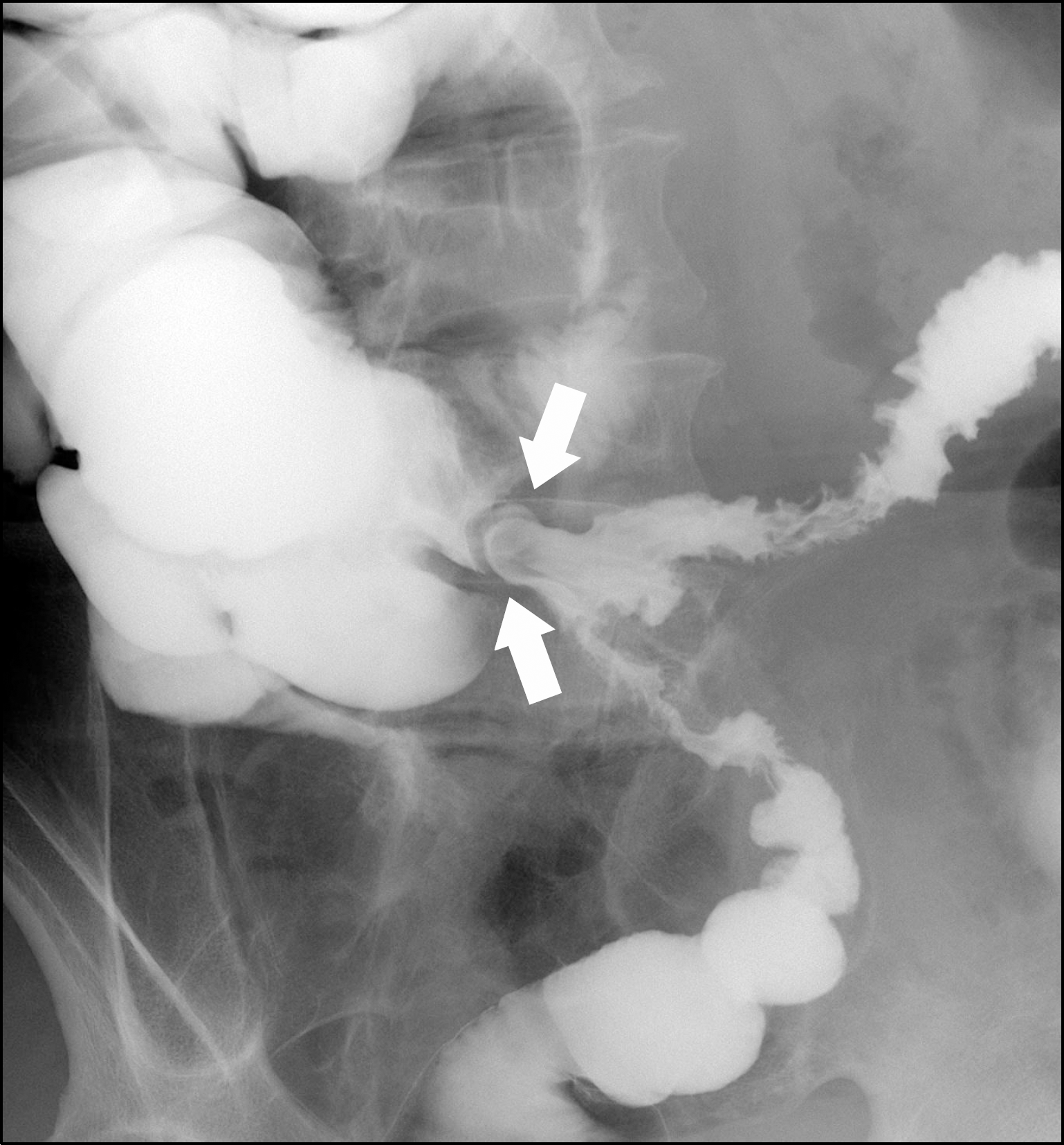Abstract
Colocolic fistulas are usually a complication of an inflammatory or neoplastic process. Development of these abnormal bowel communications may lead to bacterial overgrowth. We report on a 71-year-old man with a one-year history of recurrent abdominal distension and irregular bowel habits. Abdominal X-rays and computed tomography showed multiple air-fluid levels and loops of distended bowel without evidence of mechanical obstruction or diverticulitis. Colonoscopy showed a fistulous tract between the sigmoid colon and cecum. Results of a lactulose breath test showed high fasting breath CH4 levels, which were thought to be the result of intestinal bacterial overgrowth. The patient was diagnosed with a colonic pseudoobstruction associated with bacterial overgrowth due to a sigmoidocecal fistula. We recommended surgical correction of the sigmoidocecal fistula; however, the patient requested medical treatment. After antibiotic therapy, the patient still had mild symptoms but no acute exacerbations.
Go to : 
References
1. Stollman NH, Raskin JB. Diagnosis and management of diverticular disease of the colon in adults. Ad Hoc Practice Parameters Committee of the American College of Gastroenterology. Am J Gastroenterol. 1999; 94:3110–3121.
2. Woods RJ, Lavery IC, Fazio VW, Jagelman DG, Weakley FL. Internal fistulas in diverticular disease. Dis Colon Rectum. 1988; 31:591–596.

3. Walters B, Vanner SJ. Detection of bacterial overgrowth in IBS using the lactulose H2 breath test: comparison with 14C-D-xylose and healthy controls. Am J Gastroenterol. 2005; 100:1566–1570.

4. Pickhardt PJ, Bhalla S, Balfe DM. Acquired gastrointestinal fistulas: classification, etiologies, and imaging evaluation. Radiology. 2002; 224:9–23.

5. Sanowski RA, Costello JL. Sigmoidocecal fistula. An unusual complication of acute sigmoid diverticulitis. Am J Gastroenterol. 1967; 48:56–62.
6. Hyun YS, Han DS, Kim TY, Eun CS, Jeon YC, Sohn JH. Education and imaging. Gastrointestinal: sigmoidocecal fistula diagnosed with colonoscopy. J Gastroenterol Hepatol. 2011; 26:208.
7. Husebye E. The pathogenesis of gastrointestinal bacterial overgrowth. Chemotherapy. 2005; 51(Suppl 1):1–22.

8. Khoshini R, Dai SC, Lezcano S, Pimentel M. A systematic review of diagnostic tests for small intestinal bacterial overgrowth. Dig Dis Sci. 2008; 53:1443–1454.

9. Romagnuolo J, Schiller D, Bailey RJ. Using breath tests wisely in a gastroenterology practice: an evidence-based review of indications and pitfalls in interpretation. Am J Gastroenterol. 2002; 97:1113–1126.

10. King TS, Elia M, Hunter JO. Abnormal colonic fermentation in irritable bowel syndrome. Lancet. 1998; 352:1187–1189.

11. Perman JA, Modler S, Barr RG, Rosenthal P. Fasting breath hydrogen concentration: normal values and clinical application. Gastroenterology. 1984; 87:1358–1363.

12. Bond JH Jr, Engel RR, Levitt MD. Factors influencing pulmonary methane excretion in man. An indirect method of studying the in situ metabolism of the methane-producing colonic bacteria. J Exp Med. 1971; 133:572–588.
13. Joseph F Jr, Rosenberg AJ. Breath hydrogen testing: diseased versus normal patients. J Pediatr Gastroenterol Nutr. 1988; 7:787–788.
14. Kajs TM, Fitzgerald JA, Buckner RY, et al. Influence of a methanogenic flora on the breath H2 and symptom response to ingestion of sorbitol or oat fiber. Am J Gastroenterol. 1997; 92:89–94.
15. Attaluri A, Jackson M, Valestin J, Rao SS. Methanogenic flora is associated with altered colonic transit but not stool characteristics in constipation without IBS. Am J Gastroenterol. 2010; 105:1407–1411.

16. Weaver GA, Krause JA, Miller TL, Wolin MJ. Incidence of methanogenic bacteria in a sigmoidoscopy population: an association of methanogenic bacteria and diverticulosis. Gut. 1986; 27:698–704.

17. Jahng J, Jung IS, Choi EJ, Conklin JL, Park H. The effects of methane and hydrogen gases produced by enteric bacteria on ileal motility and colonic transit time. Neurogastroenterol Motil. 2012; 24:185–190. e92.

18. Schecter WP, Hirshberg A, Chang DS, et al. Enteric fistulas: principles of management. J Am Coll Surg. 2009; 209:484–491.

Go to : 
 | Fig. 1.Plain abdominal radiography in erect position. Distended intestine, especially the large intestine, and multiple air-fluid levels are seen. |
 | Fig. 2.Colonoscopic findings. White numbers corresponding to the insertion lengths of the colonoscope could be seen through the fistulous opening located in the cecum. The appendiceal orifice was normal. |




 PDF
PDF ePub
ePub Citation
Citation Print
Print




 XML Download
XML Download